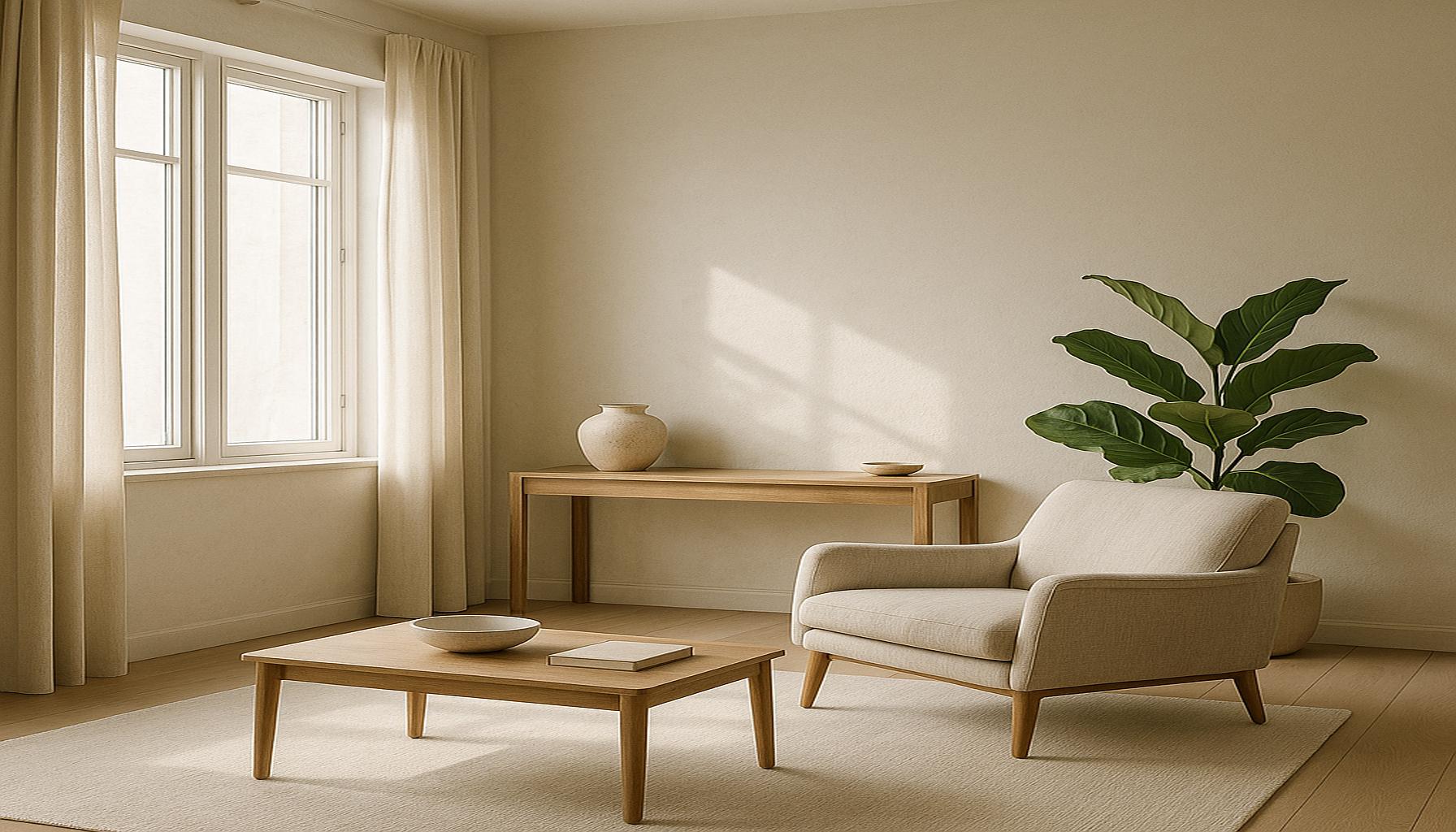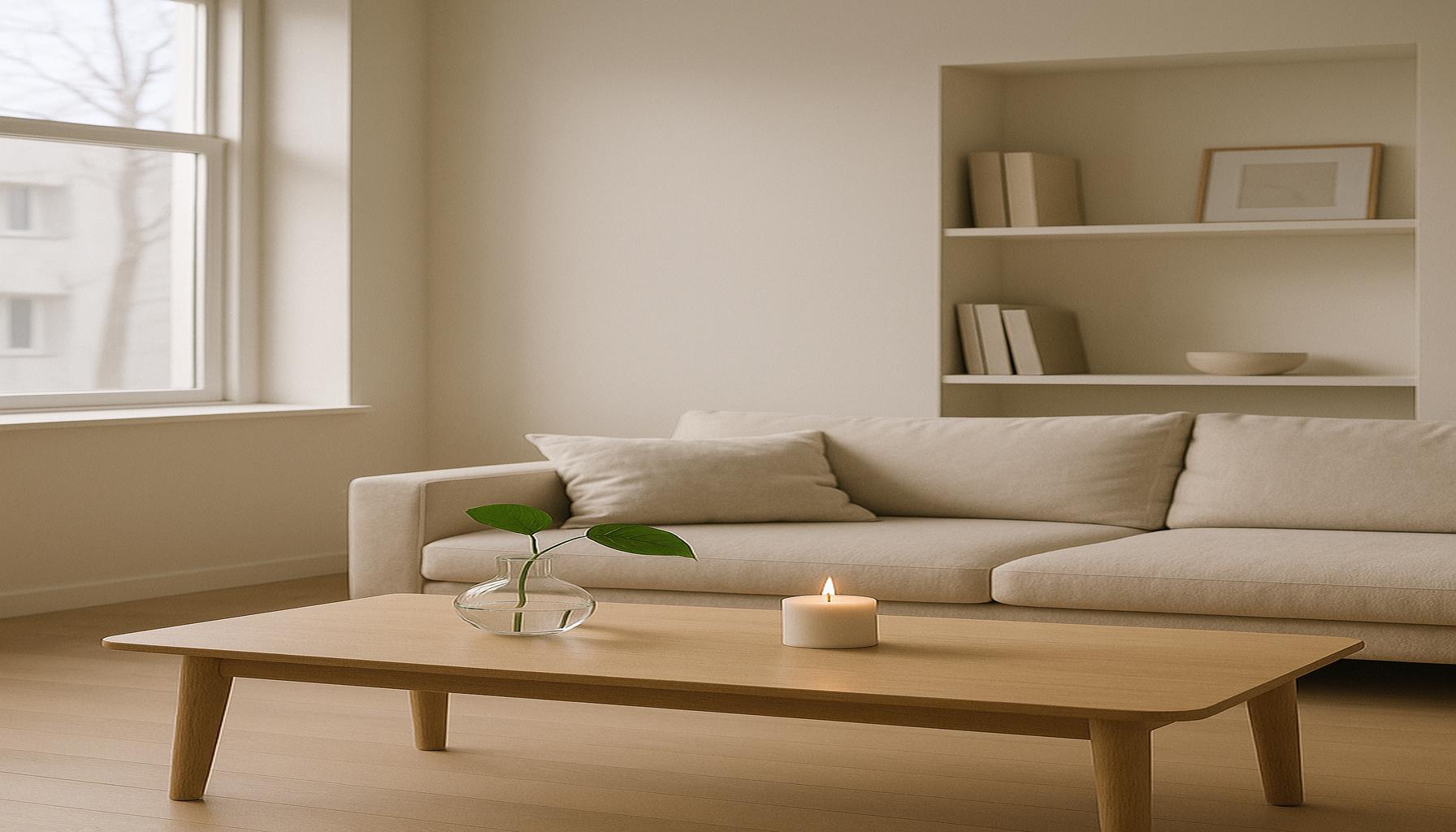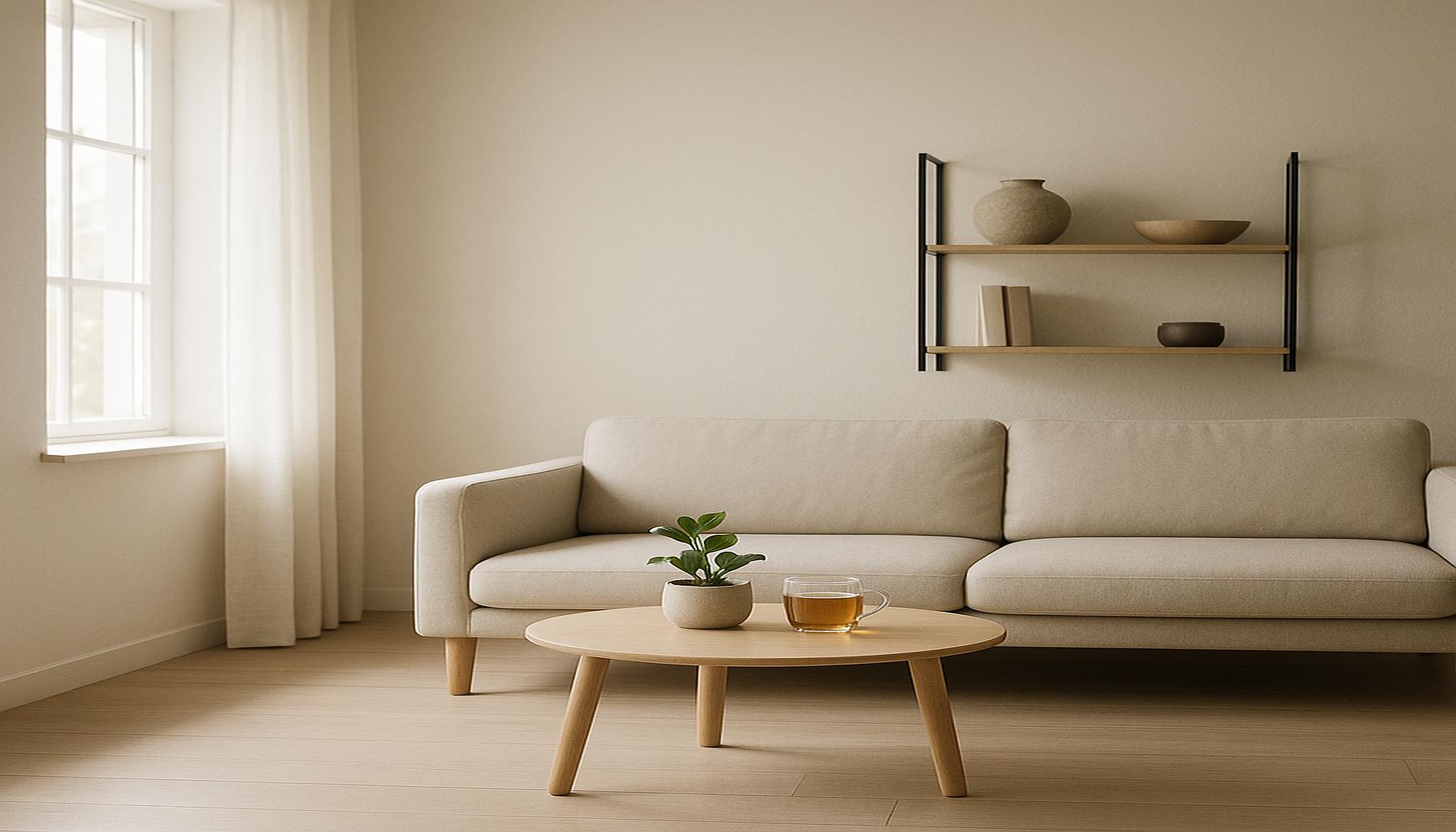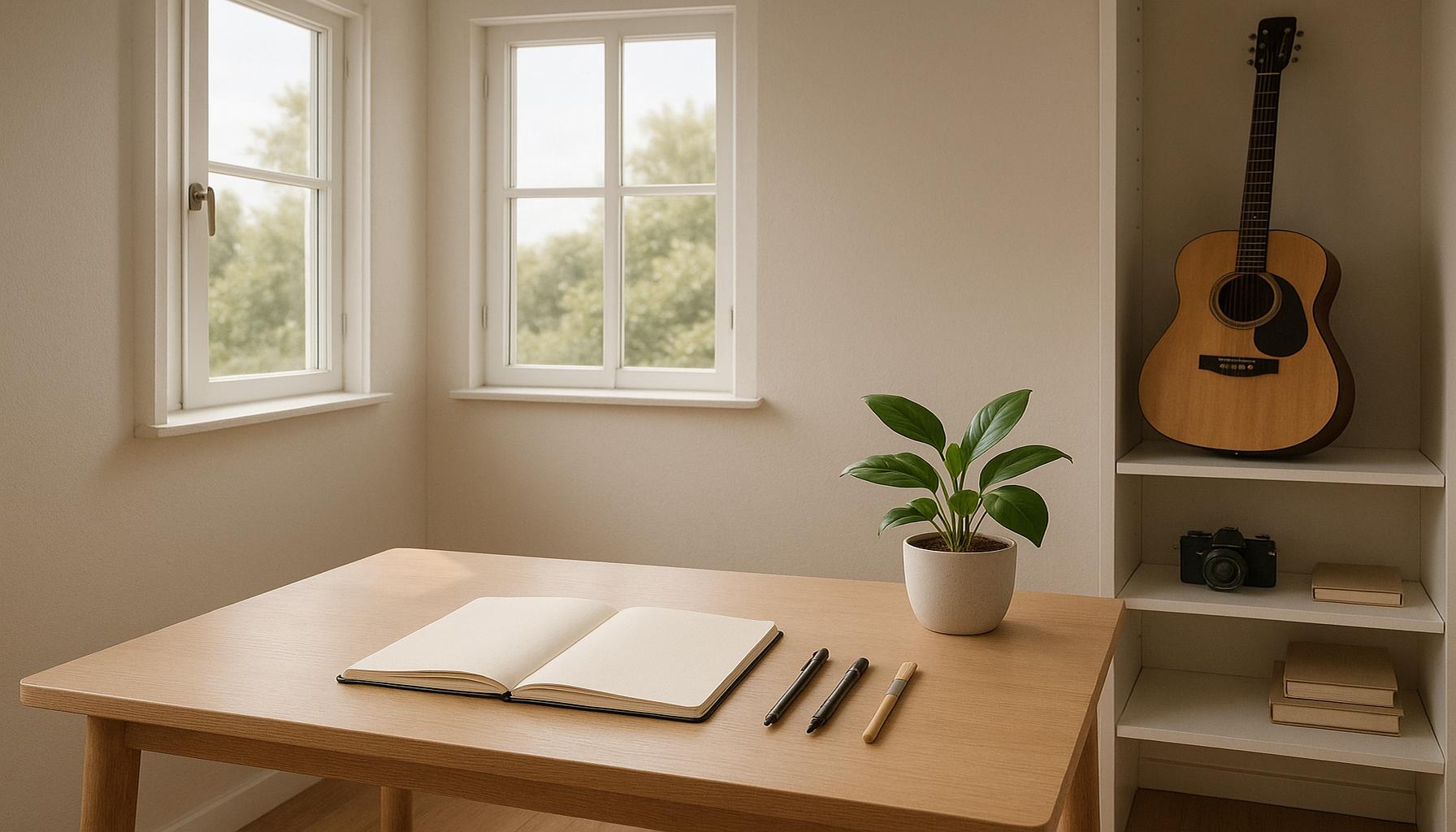The Importance of Intentionality in Minimalism Practice: How Conscious Decisions Transform Spaces

Embracing Minimalism: A Pathway to Intentional Living
In an era where consumerism reigns and possessions often dictate our existence, choosing to embrace minimalism signifies a profound shift towards a life centered around intentionality. This lifestyle choice encourages individuals to thoughtfully select what to retain in their living spaces, leading to environments that genuinely reflect their core values and contribute positively to their overall well-being.
The chaos of modern life, characterized by excessive distractions and clutter, can often feel overwhelming. Adopting a minimalist approach prompts us to engage in critical reflections about the significance of our belongings and surroundings. Hence, we are encouraged to ask ourselves essential questions:
- What items truly add value to my life?
- How does my environment impact my mental health?
- Am I surrounding myself with things that inspire me or hold me back?
Such inquiries go beyond mere aesthetic preferences; they lead us to define what is genuinely important. For instance, rather than accumulating flashy gadgets that quickly become outdated, a minimalist may opt for a high-quality, multi-functional tool that serves essential purposes. This conscious choice fosters a sense of satisfaction, knowing that each item has been selected with purpose.
The Journey of Transformation
Pursuing intentionality can best be described as a journey towards transformation. It is not simply about discarding excess possessions but also involves making deliberate choices reflective of one’s identity and aspirations. As this transformation unfolds, individuals often experience:
- Greater clarity in daily life: With fewer distractions, it becomes easier to focus on essential tasks and interactions.
- Enhanced productivity: A minimalist workspace devoid of clutter often leads to improved workflow and increased creativity.
- A more peaceful and serene living space: Simplified environments significantly reduce stress and promote mental tranquility.
Shaping Mindsets
The impact of intentional living extends far beyond our physical spaces. By fostering mindfulness regarding our possessions, we begin to reshape our mindsets. Studies have indicated that people who adopt minimalism often report higher levels of happiness and satisfaction in their lives. This fosters a profound sense of fulfillment, leading many individuals to explore deeper aspects of themselves and their connections with others.

In conclusion, embracing a minimalist lifestyle driven by intentionality is a powerful way to transform not just our spaces, but our very approach to life. It invites us to investigate what truly matters, paving the way for a purposeful existence brimming with clarity and serenity. As we delve deeper into the tenets of minimalism, it becomes clear that the journey is more about self-discovery than mere decluttering, guiding us toward a more enriching and balanced existence.
DISCOVER MORE: Click here to learn how to simplify your digital life
Understanding the Core of Intentionality in Minimalism
At its essence, intentionality in minimalism embodies the principle of making conscious decisions about what enters our lives and spaces. This mindset shifts our focus from accumulation to meaningful selection. Unlike traditional consumerist paradigms that often stress the quantity of belongings, intentional living encourages quality, purpose, and functionality. This transformation can lead to a deeply personal connection with our possessions and, consequently, our environments.
When we commit to intentionality, we unlock several benefits that permeate our daily lives and influence our emotional well-being. Engaging with the principles of minimalism allows us to evaluate our surroundings critically. We begin to see that our spaces should not only be functional but also nurturing and reflective of our personal ethos. Therefore, it is crucial to examine the impact of our choices regarding our physical spaces. Here are several key aspects that illustrate the importance of intentionality:
- Personal Reflection: Each item we choose to keep often tells a story about who we are and what matters most to us. Engaging with this narrative enables us to better understand our values and aspirations.
- Mindful Consumption: By being intentional, we can shift from impulsive buying habits to a more measured approach. This can lead to a significant reduction in waste and a sustainable lifestyle.
- Improved Aesthetics: Spaces that are curated with intention are often more aesthetically pleasing. When every item serves a purpose or brings joy, the overall ambiance becomes harmonious and attractive.
For example, instead of cluttering a dining table with a myriad of decorative items, an intentional approach might involve selecting a single statement piece that resonates with the household’s personality. This not only enhances the visual impact but also encourages a feeling of calm and order within the space. The simple act of selecting with intention can yield profound emotional responses, marking a transition from merely living in a space to truly inhabiting it.
Creating Space for Change
The practice of intentionality serves as a catalyst for change, prompting individuals to reevaluate their habits and lifestyle choices. Many minimalists report that as they became more discerning about their possessions, they also started to reflect on other areas of their lives, such as relationships, commitments, and general routines. This holistic approach is what truly distinguishes minimalism—as it encourages both physical and mental decluttering.
Incorporating intentionality into the minimalism practice doesn’t require drastic changes overnight. Instead, it can be a gradual process of discovery. For those navigating this journey, consider these actionable steps:
- Establish Criteria: Determine specific criteria for what qualifies as worthy to keep, such as emotional significance, utility, or beauty.
- Start Small: Begin with one category, such as clothing or kitchenware, and assess each item based on the established criteria.
- Regularly Reassess: Intentionality is not a one-time act. Regularly revisit your decisions and continually adjust your belongings to reflect your evolving preferences and values.
By embedding intentionality into our minimalist practices, we inevitably see a transformation in our spaces, but more importantly, in ourselves. The emotional and psychological benefits that arise from living in a consciously curated environment extend far beyond aesthetics, fostering personal growth and fulfillment.
The Role of Conscious Choices in Space Transformation
Minimalism is much more than a design aesthetic; it is a lifestyle choice rooted in intentionality that emphasizes the significance of conscious decision-making in our environments. By adopting a minimalist approach, individuals can foster a sense of clarity and peace within their living spaces, thus reflecting their values and life priorities. Among the crucial aspects of minimalism lies the practice of decluttering, which involves assessing and removing items that do not serve a purpose or bring joy. This process not only contributes to a more organized space but also encourages mindfulness, as individuals begin to appreciate their possessions on a deeper level. The concept of intentional living encourages individuals to select items that are meaningful and functional, promoting a more curated environment.Furthermore, intentionality extends to the color schemes and layouts chosen in minimalist spaces. Neutral tones and open spaces can evoke feelings of calmness, leading to a more functional and serene atmosphere. By thoughtfully designing their surroundings, individuals can create a sanctuary that embodies their aspirations. These conscious choices ultimately enhance wellbeing and foster a positive mindset, highlighting the profound impact that intentional decision-making can have on our living environments.To delve deeper into how we can implement these practices in our daily lives, consider exploring how the principles of minimalism can elevate your own space to reflect who you truly are. An intentional path toward a cleaner, more purposeful environment could begin with the simple act of reviewing what surrounds you, inciting curiosity about what further transformations await.
DISCOVER MORE: Click here to learn about the emotional impact of decluttering
Empowering Personal Growth Through Intentional Spaces
While the aesthetic benefits of a minimalist approach are evident, the real transformation happens below the surface, within the realm of personal growth and self-awareness. By practicing intentionality in choosing what we keep, we begin to form a deeper relationship not only with our belongings but also with ourselves. This connection manifests in various ways, pushing us towards a more mindful existence.
For instance, research from the University of Southern California reveals that individuals who engage in mindful practices report increased levels of happiness and decreased anxiety. This aligns perfectly with the principles of minimalism, where intentionality fosters mindfulness. By being deliberate about our environment, we cultivate a lifestyle that prioritizes mental clarity over chaos. Spaces curated with intention become sanctuaries that allow us to unwind and reflect, providing the mental bandwidth necessary for personal development.
Moreover, the journey toward minimalism often propels individuals to confront their attachments and dependencies. Consider the case of Anna, a New Yorker who found herself overwhelmed by her burgeoning collection of knick-knacks. By applying intentionality, she chose to evaluate these items through the lens of necessity and emotional resonance. This sparked a change not just in her physical space but also in her habitual tendencies towards acquiring things. As Anna reflects, “Letting go of what no longer serves me opened up space for new experiences and relationships.” This illustrates how the conscious decision to declutter can liberate us from emotional baggage and pave the way for richer, more meaningful connections.
Intentionality’s Ripple Effect on Relationships
When we begin to prioritize intentionality in our possessions, the effect often ripples out, affecting our relationships as well. In a culture that encourages constant busyness and engagements, simplifying our immediate environment can lead to simpler, more fulfilling bonds with others. For example, minimalists often report dedicating more quality time to loved ones, as less clutter allows for more focus and connection during interactions.
This is particularly relevant in communal living spaces, such as apartments or family homes, where shared intentionality can create a cohesive environment. Families who engage in this practice report not only a cleaner and more organized living space but also improved communication and collaboration. Parents, by articulating the values behind their minimalist choices, inspire children to think critically about their possessions and lifestyle choices, thereby promoting a generational shift towards mindful living.
- Collaborative Decluttering: Engage family or housemates in the decluttering process, fostering discussions about shared values and priorities.
- Set Intentional Goals: Encourage each member to establish personal goals related to their space, promoting collective commitment to minimalism.
- Mindful Gatherings: Host gatherings that prioritize experiences over material possessions, such as potlucks or workshops focused on skills rather than gifts.
Ultimately, intentionality in minimalism serves as a powerful catalyst for profound transformation, influencing not only our personal journeys but also those we care about. As we delve deeper into this intentional practice, we ignite a chain reaction—enhancing our spaces, strengthening relationships, and nurturing a more fulfilling life.
DIVE DEEPER: Click here to discover the importance of intentionality in minimalism</
Conclusion: The Transformative Power of Intentional Minimalism
As we explore the significance of intentionality in minimalism, it becomes evident that this practice extends beyond mere aesthetics and decluttering. Intentional decisions regarding our possessions not only free our physical spaces but also elevate our mental well-being, promoting a lifestyle that is both fulfilling and mindful. The connection between our environment and mental clarity cannot be understated; a curated space allows for reflection and growth, ultimately leading to richer personal experiences.
The ripple effects of intentional minimalism also permeate our relationships. By embracing a less-is-more philosophy, we prioritize connection over material excess. This shift not only simplifies our lives but fosters deeper bonds, as both individuals and families engage in thoughtful conversations around shared values and priorities. In today’s fast-paced culture, this kind of mindfulness acts as a counterbalance, guiding us back to what truly matters.
In conclusion, the importance of intentionality in minimalism transcends individual practices—it’s a movement towards greater self-awareness, emotional resilience, and enriched connections. As you embark on your minimalist journey or deepen your existing practice, remember that every conscious decision brings you closer to not just transforming your space, but also enhancing your life. So take the plunge, question your surroundings, and let the power of intentional living guide you toward a more authentic and joyful existence. The path to a clearer mind and kinder relationships awaits—are you ready to embrace it?


